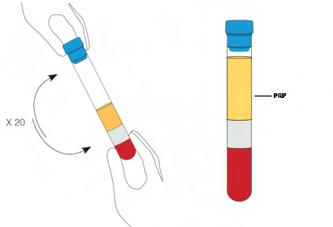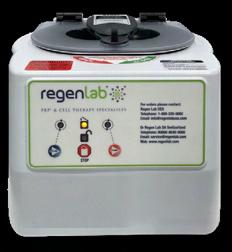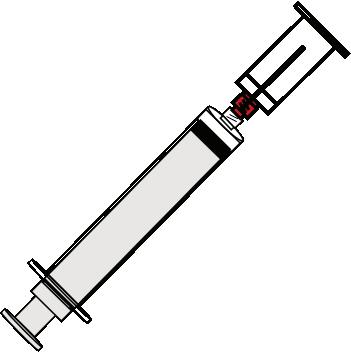
2 minute read
The Gold Standard in PRP Therapy
RegenPRP Mechanism of Action
What Anticoagulant Does Regen Lab Use?
Regen Lab uses Sodium Citrate as a fully-reversible anticoagulant. It has a neutral pH (pH=7), and has no ancillary effect on the patient. Its other benefit is that the pH level does not change as it does with PRP preparations using ACD-A anticoagulant, which is highly acidic (pH=4.5-5), contains hyperomolar dextrose, and triggers more pain than sodium citrate. The anticoagulant is already in the tube, making it a closed loop circuit.
What Makes Regen Lab Kits Unique?
Quality, safety and efficiency
Fully automated process, simple and easy procedure
Blood component separation at the cellular level
High recovery (80%) of fully functional platelets
Extremely low level of undesirable cellular contaminants
Regen Lab devices are Medical Devices for therapeutic use, and not simply blood collection tubes.
Platelets and plasma remain over the separator gel in the upper part of the device with a few mononuclear white blood cells. The rest of the buffy coat is trapped below the separator gel with the red blood cells in the lower part of the device.
The High-Quality Regen Lab PRP Process
1. Collect blood directly into RegenBCT® tubes using a blood collection set.
2. Once the butterfly needle is in the vein, insert the tube in the holder to collect blood automatically.

3. Invert the tube 3 times to mix the anticoagulant with whole blood.
4. Centrifuge for 5 minutes at 1500g.
7. Connect the Luer Lock Syringe to the transfer device.



Indications
5. Blood components are separated after centrifugation.


6. Gently rock the tube at least 20 times to ensure that the platelets are detached from the separating gel.
Features & Benefits
8. Connect the RegenBCT® tube to the transfer device to extract RegenPRP.

9. Connect a needle to syringe: RegenPRP® is ready for use.






Zimmer Cryo 7 Cooler for Maximum Patient Comfort
The Cryo 7 skin cooling system is ideal for facilitating comfortable treatment and minimising side effects during superficial laser skin procedures. Assisting the minimalisation of pain and the risk of thermal injury during laser and dermatological treatments, the Cryo 7 may also provide temporary topical anaesthetic relief for injections. Unlike other cooling methods, such as contact cooling, cryogen spray or ice packs, the Cryo 7 will cool the epidermis before, during and after the laser energy has been applied, without interfering with the laser beam.

The Cryo 7 is operated using a brilliant, high-resolution, 10-inch touch display. Individual programmes can be stored. All of the important operating elements are clearly arranged and easy to reach, thanks to an efficient, easy to use ergonomic design. The optional supporting arm facilitates hands-free operation, and the light tube can be connected to various laser handpieces through nozzles or adapters. The air stream can be easily controlled by the user.
The operation of the new Cryo 7 does not result in any consumption costs. The amount of defrosted water is monitored and the defrosting function ensures smooth operation. The air filter is readily accessible and can be easily replaced if soiled.
User-friendly design
Energy-saving eco standby operation
Storage space for 100 “favourite settings”
High-resolution 10-inch touch display
Colours and pre-settings as desired
Form meets function
Ergonomic & stylish
Ergonomic height reduces operator spinal stress
Swivelling spring arm allows one-hand operation
Quiet operation
Space-saving, with a narrow footprint
Attractive, modern and stylish design
Easier to operate than ever
Software reminder if the water tank is full
Air filter can be quickly and easily changed
Magnetic tube attachment
Automatic maintenance reminder








